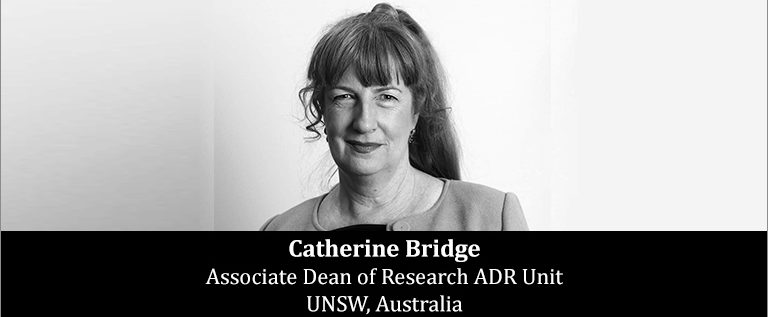
Catherine Bridge, Associate Dean of Research ADR Unit, Enabling Built Environments Program and Smart Cities from UNSW Built Environment was in Mumbai recently. Talking to Sapna Srivastava she emphasized on comprehensive development that includes the senior citizens and physically challenged.
Catherine has a significant National and International reputation in the area of enabling environments and housing solutions for older people. Her research portfolio revolves around the older people and sustainability, home modification interventions and accessibility of the built environment. As she informed, “Physically challenged are the world’s largest minority and all of us in our life trajectory will experience some level of physical impairment. If the physical environment around us is such that does not enable us to be self-sufficient, it starts the whole cycle of economic & social dependency and resentment. ”
Giving an example of the Home Modification Information Clearinghouse (HMinfo) Project funded by the Home and Community Care Program (60% Commonwealth and 40% State based) she added, “The project was established in 2002 to develop and disseminate an evidence base for Home Modification Interventions in Australia. It works with the home product companies and suppliers to guide the specification, design and construction of day to day products like a grab rail, shower, ramp or a toilet seat that while enabling the home owners as they grow older also look aesthetically pleasing to them and in case they decide to sell their house, do not bring down the value of their homes.”
Catherine also demonstrated the mobile app DIY, an evidence-based information and resource tool to direct the residents undertaking home modifications to buy which products according to their physical impairment, the cost and from where. “I am working with Caroma Industries the largest commercial sanitaryware and bathroom products suppliers in Australia on bathrooms for older people and also with Cisco that is developing a lighting product that can detect the skin texture to determine the age of the resident and switches on a series of light as one moves forward. The lights would be intelligent enough to detect a malfunction in any of the lights in the series to send a message foe repair,” she informed.
In 2006, Catherine was awarded a plaque by the Sri Lankan Urban Development Authority for her input regarding the creation of a non-handicapping environment in the National rebuilding initiatives undertaken following the Tsunami of 2004. Stating her experience, she said, “The rehabilitation homes for the Tsunami affected people were low cost houses but were being designed without taking into account their social background and daily habits. We advised the authorities on the changes that were in keeping with the local traditions and enabled an independent living environment for the population.”
On questioning about the concept of smart cities gaining popularity across the world, she raised the concern about inclusion of the aged and the physically challenged within the new urban development. “ Simple modifications in the planning and designing of the products that do not cost more than 0-2% can make people like a pregnant women or a man with sports injury to knee more independent, safe and reduce the need for assistance,” she commented.
Technology and sustainability are good for any urban development but liveability of a city is the most important quotient that determines the quality of life of its citizens.
Talking about her visit to India, she mentioned her travel to Delhi and Mumbai and enthusiasm of the students to know about the opportunities of higher learning available. “During my meetings with college students, a lot of them expressed interest in doing post-graduation in a specific field of their choice. Studying abroad for that was one of the choices they were considering proactively. I feel the young generation especially the architecture & design students can take forward the initiatives that we have started to make world a better and an inclusive place for all.”
